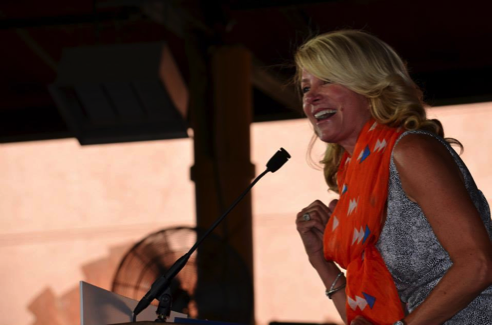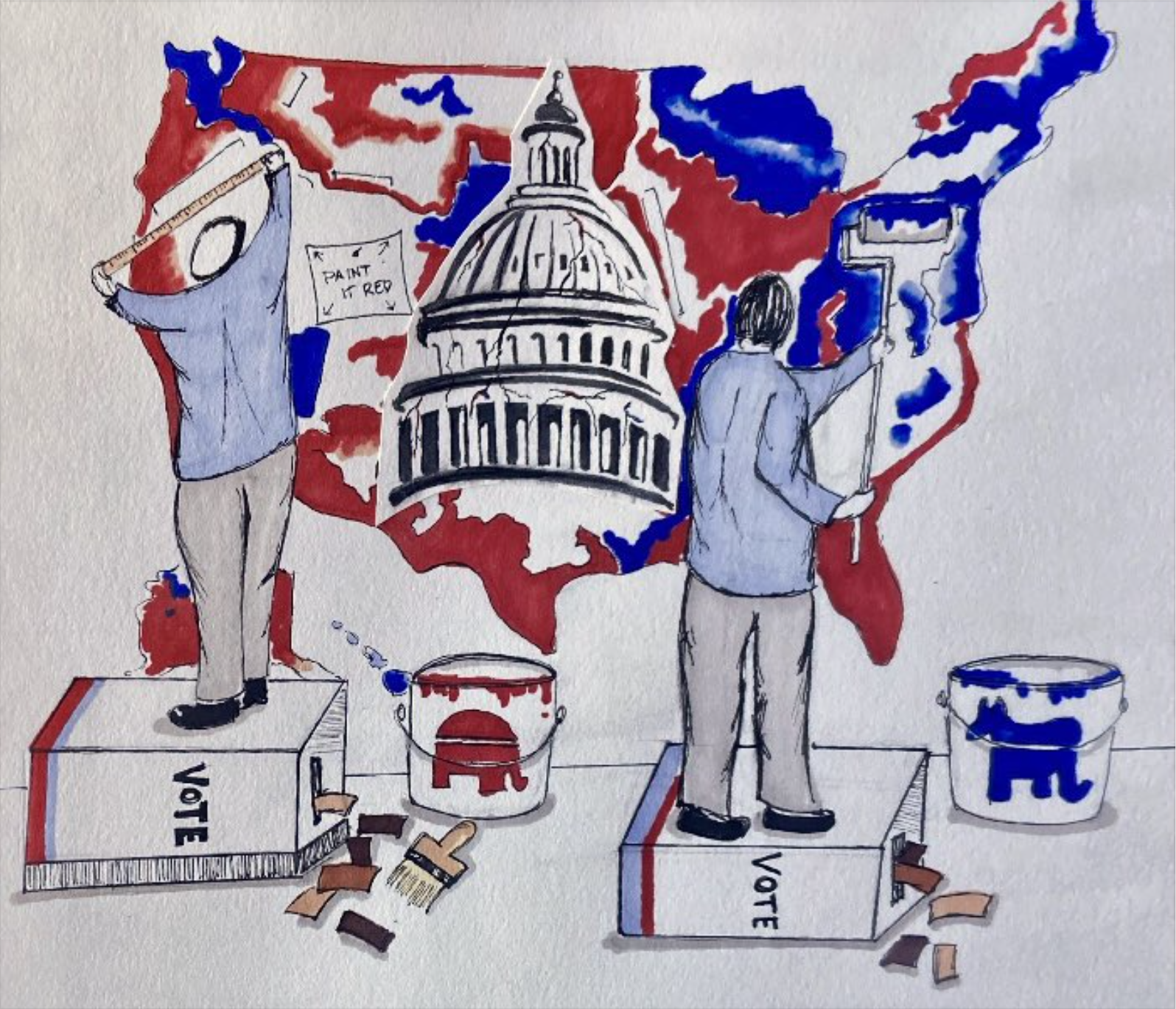The birth of Communist Cuba at the height of the Cold War presented a perceived immediate and dire threat to the United States. In response, President Kennedy authorized a handful of covert CIA operations to overthrow Cuba’s leader, Fidel Castro. All of these attempts failed, culminating with the disastrous Bay of Pigs Invasion. In October of 1962, the situation became even more alarming as Kennedy learned that the Soviets had secretly placed nuclear warheads in Cuba, leading to a two-week long naval standoff in the Caribbean. The Cuban Missile Crisis ended with the removal of the missiles and a strict agreement that the United States would not invade Cuba again.[1] However, the United States continued to focus on Cuba as an imminent international threat, a mindset that would shape policy for decades to come.
Since Cuba’s Socialist Revolution and the subsequent Missile Crisis, the United States’ main goal with respect to its Caribbean neighbor has been to end the Castro regime and contain Cuban Communism. As such, in 1962, the Kennedy administration implemented a full embargo of all diplomatic and trade relations with Cuba. Although communism is largely no longer perceived a global threat to U.S. security and sovereignty, the embargo has been strengthened over the last half-century under the guise of promoting democracy and capitalism. However, after 50 years of harsh economic blockade, the policy now operates in direct opposition to the current goals of the United States. Recently, the Cuban government implemented a myriad of reforms to privatize large chunks of the Cuban economy, shift the country away from its communist roots and implement a friendly free-trade economic agenda. Ironically, the embargo, which for 50 years failed to achieve its mission to eradicate communism, is now actively preventing its own goals from being met.[2] If the United States truly wants to facilitate Cuba’s transition to capitalism, it must reassess and eventually dismantle the embargo – the greatest obstruction to Cuba’s privatization efforts.
Since its conception in the early 1960s, the embargo has grown in power and scope. Initially, Cuba’s economy only survived as a result of enormous amounts of Soviet aid, which peaked at about $4.3 billion per year in the late 1980s.[3] But once the Soviet Union collapsed in the early 1990s, Cuba’s economy was left with little support. As a result, Cuban GDP dropped by 34.8% from 1991 to 1994.[4] At this point, the United States was provided with an opportunity to change its stance against Cuba: the Cold War had ended, there was relatively little threat of nuclear war, and it seemed as if free market capitalism had won over communism. Cuba’s economy was failing and even Castro, a staunch socialist in ideology, was turning towards privatization as a source of relief. But instead of changing course, the United States grew even more hostile towards Cuba. This shift can largely be attributed to domestic political considerations. The Cuban American National Foundation (CANF), a strong lobbyist organization made up of conservative, anti-Castro Cuban Americans, held sway over a large Florida voting bloc. CANF became enormously influential because of Florida’s position as a key swing state in presidential elections.[5] Because CANF represented much of the large Cuban minority population in Florida, it was able to influence the state, and thus the election, in favor of one party over another, giving CANF significant leverage within Washington. CANF lobbied President George H.W. Bush to pass the Cuban Democracy Act just before the 1992 presidential election and President Clinton to pass the Helms-Burton Act just before the 1996 election. [6][7][8] These two acts codified the embargo into U.S. law, discouraged foreign investment from all countries into Cuba, and set up an exhaustive list of conditions for Cuba to meet before the embargo could be reversed.[9] Although President Obama took steps early in his presidency to loosen travel restrictions, these two established laws continue to dictate the U.S. and Cuban relationship today.[10] As such, the influence of domestic lobbying groups has largely prevented the United States from having a fair and honest discussion about the merits of the embargo.
While the U.S. continued to strengthen the embargo, Cuba fell further into economic and political disarray. Cuba’s economic survival during the 1990s and early 2000s was in large part due to the enormously cheap oil it received, and still receives, from the pro-communist Venezuelan government.[11] Some economists estimate that the savings from the oil amount to a $6 billion annual subsidy, which is more than what was received from the Soviet Union years before.[12] But with the illness of dictator Hugo Chavez and the possibility of regime change in Venezuela, it became less certain that the subsidy would continue. On top of this, Cuban dissidents like blogger Yoani Sanchez began to put internal pressure on the government to step up and support its people who for decades have suffered from lack of economic opportunity and severely limited political freedom.[13]
In 2008, an old and ailing Fidel announced his resignation, and Raul Castro began his first full term as Cuban president.[14] Two years later, due to both economic necessity and political pressure, Raul announced sweeping reforms that aimed to shift the public-private balance of Cuba’s economy to around 60% private and 40% public by 2015.[15] For years, Cuba has been ravaged by internal political pressure and a failing economy. Fidel Castro’s unwillingness to adapt his Communist ideology to the increasingly interconnected world could help explain Cuba’s downfall. Despite the country’s excellent social services, many Cubans could barely make enough to support basic living expenditures. Unlike his brother, Raul Castro seems to understand Cuba’s pressing need for change. In April of 2011, the Sixth Cuban Congress approved a set of action items to promote globalization and privatization in Cuba.[16] Over the last three years, those reforms have been strengthened, and Cuba is on the path to economic liberalization.
The efficacy of Cuban government reforms have been validated by economic growth. In 2010, Cuba had about 176,000 private workers.[17] By 2013, that number had almost tripled, despite being stagnant for the previous 15 years.[18] In Havana, Cuba’s largest city and capital, the private housing sector grew by 87% during the same period, while the number of private retail shops increased by over 50%.[19] Overall, the private sector share of the Cuban economy increased from 1.42% to 15% from 2010 to 2013.[20]
It is important to note Cuba still faces major obstacles. Economic reforms currently do not extend beyond the service sector, specifically in tourism. The increasing number of restaurants, shops, and taxi services mostly impact tourist populations from Europe and Canada.[21] The credit policy, which gives cheap credit to new business owners, has had a weak impact in spurring loans, mainly because many entrepreneurs don’t trust the government to adhere to its reform policy agenda.[23] Certain reforms have also increased Cuba’s racial divide, marginalizing black Cubans.[24] One of Cuba’s largest problems is that its most important professional fields including medicine, engineering and law, remain under control of the government, making the most critical jobs some of the lowest-paying. Still, the U.S. embargo is the most immediate roadblock in Cuba’s privatization efforts.[25]
Unfortunately, the U.S. embargo has an inordinate impact on Cuba’s ability to privatize, primarily because of the Helms-Burton Act passed by President Clinton in 1996. The act takes significant action to discourage foreign countries from investing in Cuba. It prohibits foreign subsidiaries of U.S. companies from participating in business with Cuba and prevents foreign companies that conduct business with Cuba from conducting business in the United States.[26] In July 2014, French bank BNP Paribas was fined close to $9 billion for doing business in Cuba. Many Europeans banks have been fined hundreds of millions of dollars for their Cuban transactions, causing several banks to publicly state their divestment from Cuba.[27] Almost all large financial institutions, institutions that could provide significant capital to upgrade Cuba’s degrading infrastructure or create private business, will not invest in Cuba as long as the embargo remains intact.
The political effects of the embargo may be even more harmful to Cuba’s privatization. As former Secretary of State Hillary Clinton noted “The embargo is Castro’s best friend,” because it provides him “with an excuse for everything.”[28] Although the Castro regime has been publicly against the embargo for years, many media members have noted that the embargo has become a scapegoat for the Castro regime, a device for them to lay responsibility for their economic failures on the United States.[29] If the U.S. lifted the embargo, Cuba’s ability to privatize would no longer be significantly hindered by outside forces, and the Castro regime would be pressed to blame economic failures on anything but their own policies.
It’s not hard to imagine the possibilities of an embargo-free Cuba. U.S. businesses and foreign businesses could rush into Cuba to tap a market of over 11 million people. The Cuban government, which publicly advertises its desire for foreign investment, would welcome this sorely needed source of capital. Influx of private business could completely change the make-up of the Cuban economy, catalyzing privatization at a much faster rate than government alone could. The United States could recover the approximate $1.2 billion it loses annually from the embargo, losses that stem from the fact that U.S. businesses cannot access Cuban markets.[30] Cuba, thanks to its renowned universal healthcare and education systems, could be a haven for quality human capital. Entrepreneurship could thrive in the region. An island that has been cut off from the world for a half century could be revitalized with new economic opportunity.
Foreign policy towards Cuba has been on the backburner of U.S. politics for the last decade and a half, but it is primed to take center stage once again. The economic reforms of Cuba, coupled with the seeming end of the Castro regime in 2018 will put the embargo under national scrutiny once more. The United States government has a choice: it can prioritize domestic political considerations and continue a failed policy at the expense of the Cuban people, or it can follow the principles it claims to stand for by ending the embargo and providing a willing Cuba real economic opportunity through private enterprise.
References
[1] Lee, Brianna. “U.S. – Cuba Relations.” Council on Foreign Relations. February 26, 2014. Accessed November 17, 2014. http://www.cfr.org/cuba/us-cuba-relations/p11113.
[2] Griswold, Daniel. “Four Decades of Failure: The U.S. Embargo against Cuba.” Cato Institute. Accessed November 3, 2014.
[3] Spadoni, Paolo. Failed Sanctions: Why the U.S. Embargo against Cuba Could Never Work. Gainesville: University Press of Florida, 2010.
[4]Spadoni, Paolo. Failed Sanctions: Why the U.S. Embargo against Cuba Could Never Work. Gainesville: University Press of Florida, 2010.
[5]Spadoni, Paolo. Failed Sanctions: Why the U.S. Embargo against Cuba Could Never Work. Gainesville: University Press of Florida, 2010.
[6] Spadoni, Paolo. Failed Sanctions: Why the U.S. Embargo against Cuba Could Never Work. Gainesville: University Press of Florida, 2010.
[7] “Electoral Map 1996.” January 1, 2008. Accessed November 3, 2014. http://electoralmap.net/PastElections/past_elections.php?year=1996.
[8] “Electoral Map 1992.” January 1, 2008. Accessed November 3, 2014. http://electoralmap.net/PastElections/past_elections.php?year=1992.
[9] Spadoni, Paolo. Failed Sanctions: Why the U.S. Embargo against Cuba Could Never Work. Gainesville: University Press of Florida, 2010.
[10] “Briefing by Press Secretary Robert Gibbs and Dan Restrepo, Special Assistant to the President and Senior Director for Western Hemisphere Affairs (including Spanish Text).” The White House. April 13, 2009. Accessed November 3, 2014.
[11]Chaumbraud, Cecile. “Cuba Plans Tentatively for Life after a Socialist Venezuela.” May 27, 2014. Accessed November 3, 2014.
[12] Chaumbraud, Cecile. “Cuba Plans Tentatively for Life after a Socialist Venezuela.” May 27, 2014. Accessed November 3, 2014.
[13] Sanchez, Yoani. “25 Cuban Dissidents Launch a Hunger Strike.” The Huffington Post. September 12, 2012. Accessed November 3, 2014.
[14] “Raul Castro Fast Facts.” CNN. May 25, 2014. Accessed November 3, 2014.
Triana, Juan. “Cuban Economy: The Private Sector’s Behavior at a Glance.” Lecture,, , May 22, 2014.
[15] Frank, Mark. “Cuba Approves Landmark Economic Reforms – FT.com.” Financial Times. April 19, 2011. Accessed November 3, 2014.
[16] Triana, Juan. “Cuban Economy: The Private Sector’s Behavior at a Glance.” Lecture,, , May 22, 2014.
[17] Triana, Juan. “Cuban Economy: The Private Sector’s Behavior at a Glance.” Lecture,, , May 22, 2014.
[18] Triana, Juan. “Cuban Economy: The Private Sector’s Behavior at a Glance.” Lecture,, , May 22, 2014.
[19] Triana, Juan. “Cuban Economy: The Private Sector’s Behavior at a Glance.” Lecture,, , May 22, 2014.
[20] Triana, Juan. “Cuban Economy: The Private Sector’s Behavior at a Glance.” Lecture,, , May 22, 2014.
[21] Triana, Juan. “Cuban Economy: The Private Sector’s Behavior at a Glance.” Lecture,, , May 22, 2014.
[22] Triana, Juan. “Cuban Economy: The Private Sector’s Behavior at a Glance.” Lecture,, , May 22, 2014.
[23] Valdés, Rosa, and Daniel Trotta. “Market-style Reforms Widen Racial Divide in Cuba.” Reuters. September 2, 2014. Accessed November 3, 2014.
[24] Cooke, Julia. “In Cuba, Unequal Reform.” The New York Times. April 1, 2014. Accessed November 3, 2014.
[25] Groombridge, MA. “Missing the Target: The Failure of the Helms-Burton Act.” Cato Institute. June 5, 2001. Accessed November 3, 2014.
[26] Tamayo, Juan. “Cuba Calls U.S. Fine on Bank.” Miamiherald. July 3, 2014. Accessed November 3, 2014.
[27] Kornbluh, Peter. “The Real Reason It’s Nearly Impossible to End the Cuba Embargo.” The Atlantic. October 5, 2014. Accessed November 3, 2014.
[28] Piven, Ben. “In Cuba, U.S. Embargo Elicits a Shrug | Al Jazeera America.” In Cuba, U.S. Embargo Elicits a Shrug | Al Jazeera America. Accessed November 3, 2014.
[29] Hanson, Daniel. “It’s Time For The U.S. To End Its Senseless Embargo Of Cuba.” Forbes. January 16, 2013. Accessed November 3, 2014.



